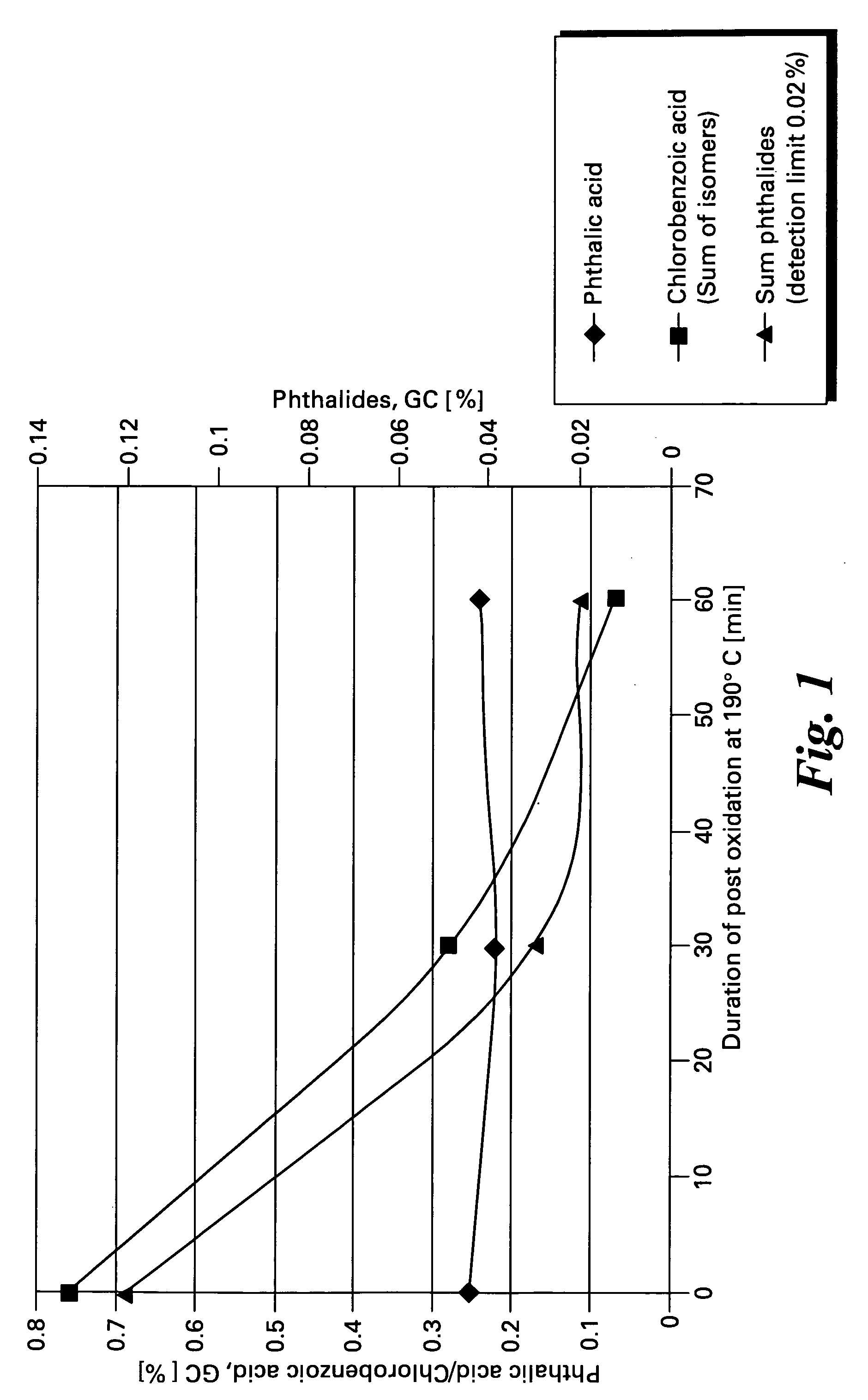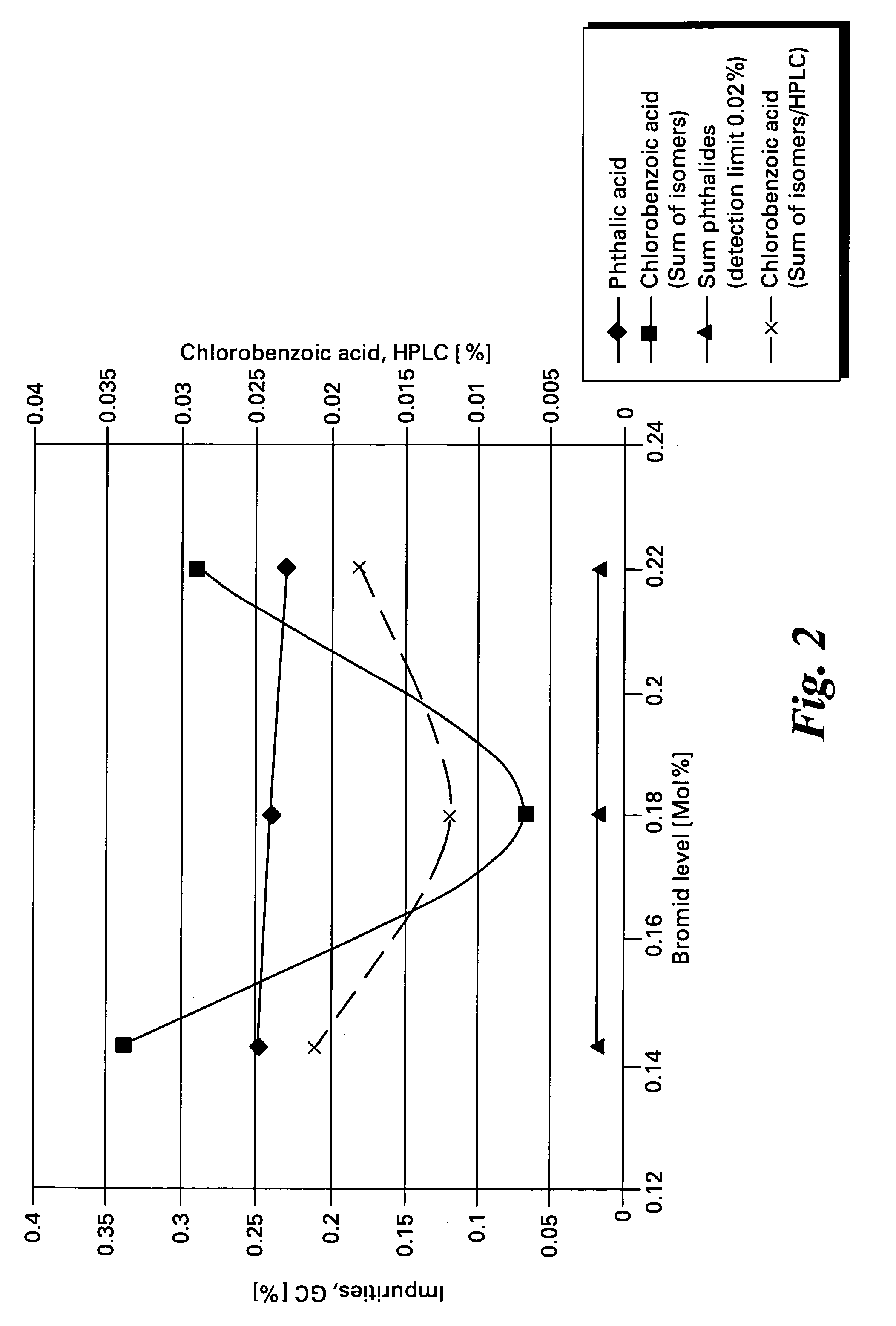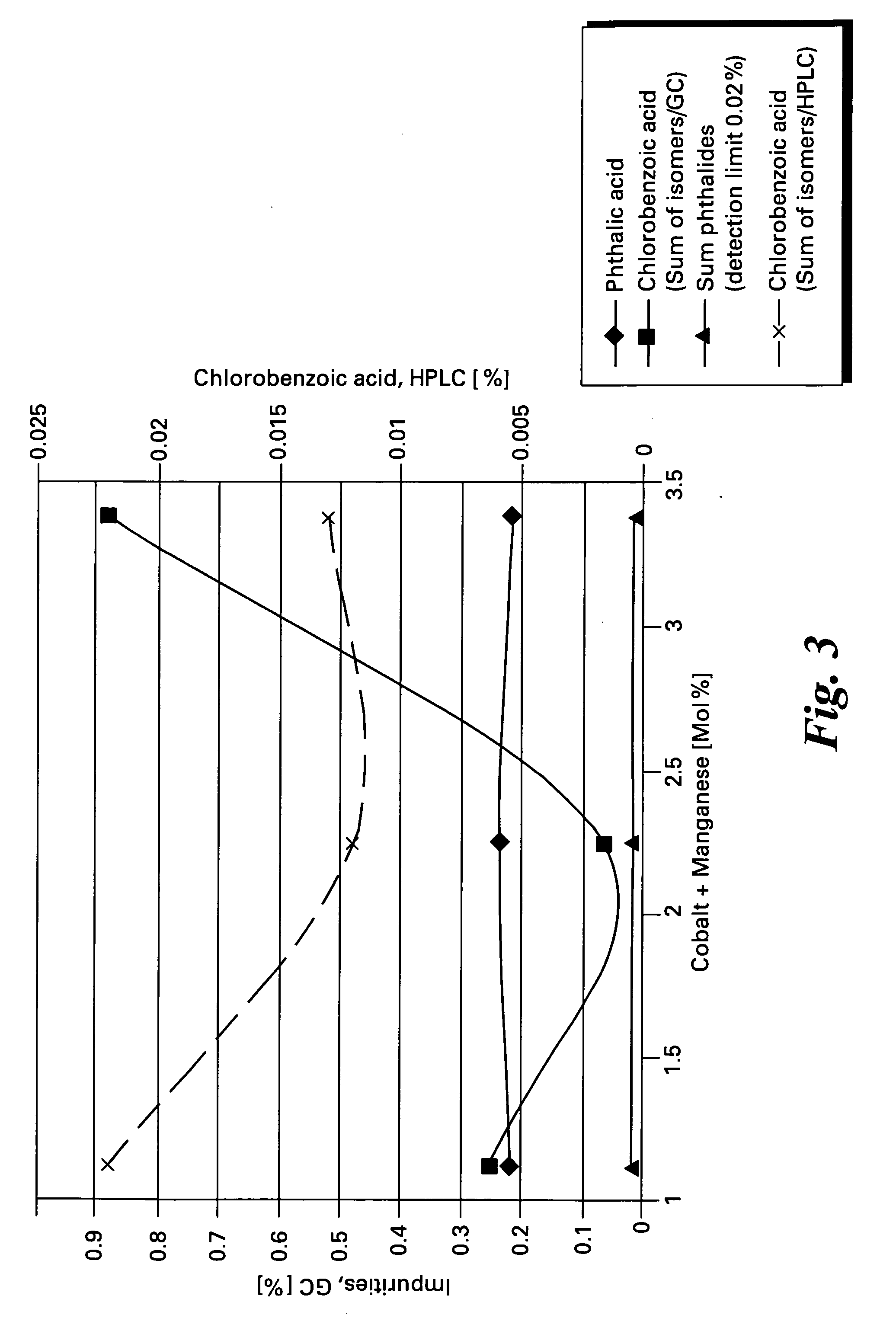Method of making halophthalic acids and halophthalic anhydrides
a technology of halogenated xylene and halogenated anhydride, which is applied in the preparation of organic compounds, chemical apparatus and processes, and organic chemistry. it can solve the problems of reducing reaction selectivity, difficult oxidation of halogenated xylene, and high cost of halogenated xylen
- Summary
- Abstract
- Description
- Claims
- Application Information
AI Technical Summary
Benefits of technology
Problems solved by technology
Method used
Image
Examples
example 1
[0047] A 3.5 liter reaction vessel equipped as described above was charged with a 95:5 mixture of 4-chloro-o-xylene and 3-chloro-o-xylene (492.1 g, 3.50 mol), acetic acid (1925 mL, 32.06 mol), cobaltous acetate tetrahydrate (13.1 g, 0.0526 mol, 1.50 mole % based on 3.5 moles of 3- and 4-chloro-o-xylene), manganous acetate tetrahydrate (6.4 g, 0.0261 mol, 0.75 mole % based on 3.5 moles of 3- and 4-chloro-o-xylene), sodium bromide (0.6 g, 0.0060 mol, 0.17 mole % based on 3.5 moles of 3- and 4-chloro-o-xylene), and sodium acetate (2.9 g, 0.0354 mol, 1.01 mole % based on 3.5 moles of 3- and 4-chloro-o-xylene). The reaction vessel was sealed and pressurized with nitrogen to 19 bar and then heated to about 160° C. Compressed air was then introduced into the reaction mixture at a rate such that the concentration of oxygen in the gas emerging from the reactor gas outlet valve was about 0.5%. The reaction temperature was maintained at about 160° C. for 1 hour and was then raised to about 175...
examples 2-14
[0048] Data for a series of oxidation reactions conducted as described in Example 1 together with modifications to reaction parameters indicated are gathered in Table 1. The data demonstrate the effectiveness of the method of the present invention to produce high yields of chlorophthalic acid while limiting the amount of chlorobenzoic acid by-products. In Table 1 the header “Variation” refers to the reaction parameter being varied in the Example, “standard” refers to the amounts of reagents and reaction conditions used in Example 2 which are given below.
example 2
Conditions of Example 2
[0049] (A) Reagents
492.1g(3.5 Mol)3- / 4-Chloro-1,2-dimethylbenzene(95% 4-isomer + 5% 3-isomer)1925gacetic acid13.1g(52.5 mMol)Cobaltous acetate tetrahydrate6.4g(26.25 mMol)Manganous acetate, tetrahydrate0.65g(6.3 mMol)sodium bromide12.3g(150.0 mMol)sodium acetate (anhydrous)
(B) Oxidation Conditions
[0050] 19 barabs nitrogen pressure, stirrer speed 800 rpm. Temperature 152° C. at initial oxygen introduction. Cooling begun immediately upon reaction initiation to maintain an internal temperature of about 160° C. After 60 min the temperature was raised to 175° C. At the beginning of the post-oxidation phase of the reaction the temperature was raised to 190° C for a period of 60 minutes.
Induction period:Reaction time:144 min + 60 min post reaction at 190° C.Reaction Temp.:first 160-161° C., then 173-177° C.,end 190° C.Pressure:19 barabsGas flow rates:initial 1050 l / h (scaled value 210 l / h),much slower at “EOR”.
[0051] Still referring to Table 1, the term “air in...
PUM
| Property | Measurement | Unit |
|---|---|---|
| temperature | aaaaa | aaaaa |
| temperature | aaaaa | aaaaa |
| partial pressure | aaaaa | aaaaa |
Abstract
Description
Claims
Application Information
 Login to View More
Login to View More - R&D
- Intellectual Property
- Life Sciences
- Materials
- Tech Scout
- Unparalleled Data Quality
- Higher Quality Content
- 60% Fewer Hallucinations
Browse by: Latest US Patents, China's latest patents, Technical Efficacy Thesaurus, Application Domain, Technology Topic, Popular Technical Reports.
© 2025 PatSnap. All rights reserved.Legal|Privacy policy|Modern Slavery Act Transparency Statement|Sitemap|About US| Contact US: help@patsnap.com



